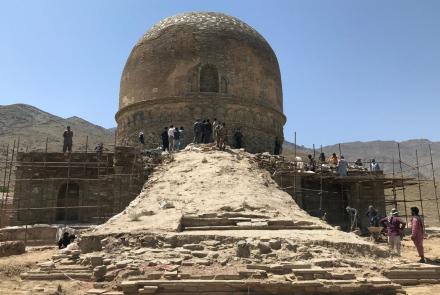Archeologists have discovered new relics that dates back to the Buddhist era in the Shewaki area in the eastern part of Kabul city.
Eight small Buddhist stupas as well as fortifications, walls and 176 other artifacts have been found in Shewaki.
“When we started our excavation, this stupa was broken down on several sides, it had massive damages all around, the upper side of the stupa was badly damaged and the lower part was underground,” said Wahid Rahimi, an archeologist.
A team of nine archeologists came to the scene two years ago and so far they have completed 50 percent of their excavation.
Another 80 experts are contributing to the renovation work at the historical site.
According to the archeologists, the ancient relics from the Buddhist era that were found in Kabul, Jalalabad and Laghman show that these areas were once part of the Gandhara civilization.
Gandhara was a major hub of Buddhist civilization for 1,000 years from which Buddhism was spread to China, Korea, Sri Lanka and Central Asia.
“Buddhism existed in Afghanistan for 1,000 years,” said Noor Aqa Noori, the head of the archeological department of the Ministry of Information and Culture.
The Ministry of Information and Culture recently included Shewaki’s historical sites in Kabul’s cultural zone. The area is expected to be transformed into a major center for visitors in the years to come.
Archeologists have said that the government should document the country’s historical sites before they are harmed.

